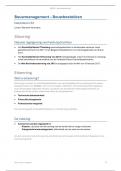Summary
Retail Marketing Summary
- Course
- Institution
- Book
PM for DISCOUNT :) This summary contains all the materials from lectures that are needed for your exams. It also consists of guest lectures, which might differ from year to year. Following this summary helped me achieve an 8/10 grade in my final examination. The summary is pretty recent, so do n...
[Show more]












